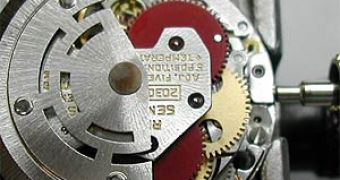Since the earliest civilizations, mankind has been preoccupied by time measurement and how to organize their life accordingly.
From solar watches that used a shadow projected by the Sun on a surface, to high precision atomic clocks, time measuring devices have known endless improvements.
In fact, a very common material is used to accurately keep track of time: quartz.
Quartite ore is cheap to extract and present in many parts around the world, so quartz watches have become widely spread in modern days.
The way these watches work is based on a natural property of quartz that makes it vibrate under pressure. More precisely, it emits 32 000 vibrations each second, so each quartz based watch incorporates a tiny chip that is programmed to count the vibrations and move one hand of the watch each time a cycle of 32 000 vibrations is completed, and another mechanism links all three hands in a chain reaction, that triggers the movement of the second and the third according to the first.
But how are all these moving parts of the entire mechanism being propelled without a power source?
The answer is kinetic energy, because every time you move your arm, your wristwatch moves along with it, and so do some of its components.
Three of them, to be exact. On the back of the watch, and the same size as the actual device, a piece of metal shaped like the half of a disk is being attached in the center through a pin that allows it to spin according to the movement of your hand.
Three smaller cogs, the smallest being only 0.25 mm in diameter (0.009 inch) amplify that movement over 100 times, so the final motion speed that is transmitted is10 times faster than that of an internal combustion engine.
The spin movement is then converted to a 1 Volt electrical current, enough to power all the other electric parts of the watch. If the internal parts are perfectly isolated, the watch could theoretically be worn 24/7 throughout a human lifetime, without stopping.
Are you wondering if a large scale device could be constructed to provide an entire house with enough energy? Well, you would need a large number of hamsters and their spinning wheels...

 14 DAY TRIAL //
14 DAY TRIAL //